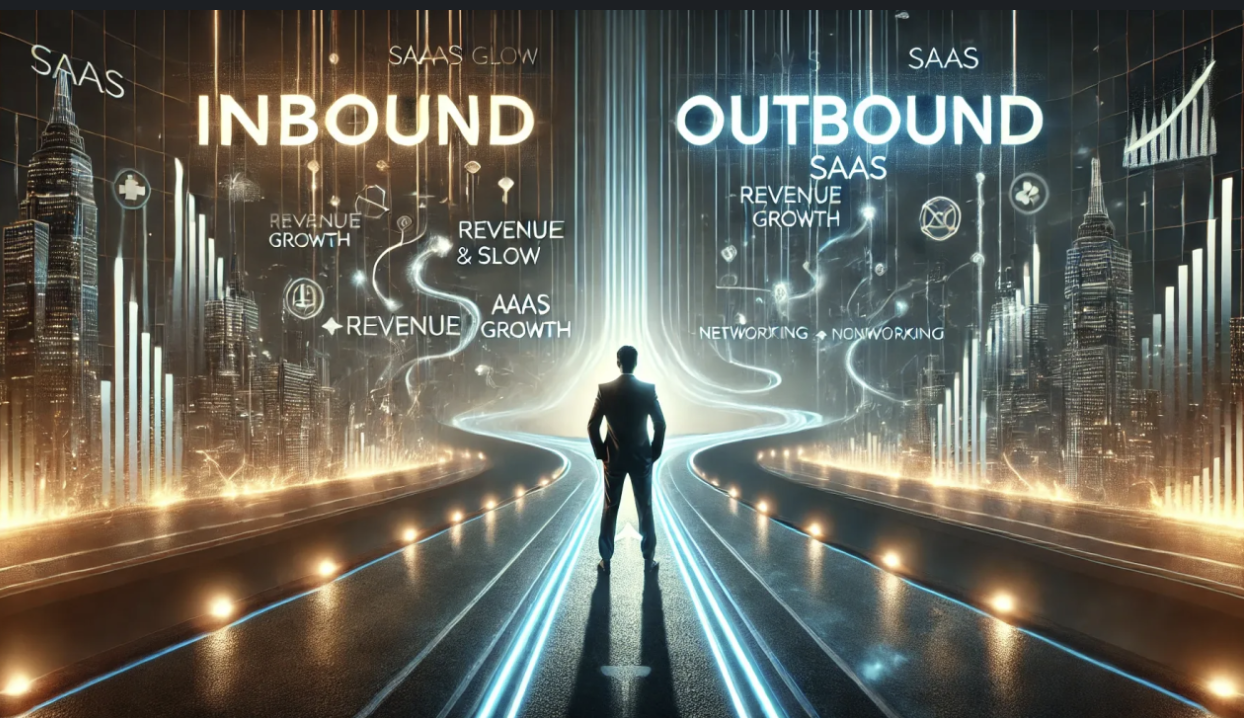Why Your “AI” Company Isn't Really (and Shouldn’t Be) an AI Company
I’ve met with and advised a myriad of entrepreneurs from around the world who, since the beginning of the year, have been riding the wave of the AI...

In the beginning, all that matters is momentum.
You can build the most elegant product in the world, but you're dying if you’re not selling. Startups live or die based on their ability to generate revenue before the runway ends. That means you don’t have the luxury of waiting for inbound to kick in or a viral loop to materialize. You have to go out and sell.
Product-led growth might be your endgame. But at the beginning? It's human-led. It’s outbound. It’s you and your team, face-to-face with the market, figuring out who cares, who buys, and what breaks.
Why Outbound Is Your Essential Starting Point
Most startup founders want to believe in the myth of organic growth. Build it, and they will come. The truth? No one’s coming unless you make them.
Outbound is how you discover truth:
It’s not just about chasing revenue—it’s about forcing clarity.
You iterate faster when you talk to real people and get real rejections. You don’t get lost in dashboards or digital noise. You get answers. And at this stage, answers matter more than scale.
Forget about building a sales team.
Start by building a sales capability.
Don’t rush to hire a CRO. That’s like hiring a general before you’ve even found a battlefield. What you need is someone—maybe it's you—who can sell—someone who can listen, adjust, and close. You need someone who can create the system before you scale it.
If you must bring in help, make sure they can operate with dirt under their fingernails. Avoid pedigree. Hire for adaptability, pattern recognition, and an appetite for chaos.
And if you’re not ready to hire at all? That’s fine. Sales doesn’t start with hiring—it starts with talking to customers.
Crafting Your Initial Sales Process
Most founders think their biggest challenge is building a product. It’s not. It’s reducing friction.
Sales friction isn’t just about whether your pitch is good. It’s about everything else that gets in the way of a "yes."
Great sales is about engineering the entire customer journey to be as seamless as possible. The best pitch in the world can’t save you from a clunky implementation or a bureaucratic procurement process.
Startups win when they sweat the unsexy stuff.
Tools and Tech Stack—Keep It Simple
Don’t overthink your tech stack. But don’t underthink it, either.
Tracking leads in a spreadsheet is startup theater. It feels scrappy, but it’s just slow. You’re not saving money—you’re creating rework. You can get the early capability you need in a world-class CRM for free. Use it. Not because it’s fancy but because you’ll thank yourself later when your data isn’t a mess.
Startups win by building systems early, before they’re needed. The “future-you” will want to send investor updates, build dashboards, and train new reps. Make their life and yours easier.
Outbound, Inbound, and PLG: Finding Balance
Yes, the future might be inbound. Yes, PLG is scalable. But don’t confuse aspiration with reality.
Outbound never dies. Even at scale, you’ll need outbound for enterprise deals, partnerships, and expansion into new verticals. You’ll need it when inbound slows. You’ll need it when a new product needs to prove itself.
It’s not about either/or. It’s about sequencing.
Start with outbound. Nail your ICP. Get some revenue. Then layer in the rest.
Early Metrics—Measure to Manage
If you’re not measuring it, you’re just guessing.
Early-stage sales metrics are simple and ruthless:
Metrics give you the ability to diagnose and adjust. They also give you the language to communicate with investors, advisors, and your team. Build a culture of measurement from day one.
Common Pitfalls (and How to Avoid Them)
Overhiring Too Soon
You don’t scale a sales process by hiring more people—you scale it by proving it works. Otherwise, you’re just burning cash faster.
Overcomplicating Too Early
Keep your messaging, pricing, and pipeline simple. Complexity kills velocity.
Skipping Validation
You don’t know your ICP until you’ve been rejected 50 times. You don’t know your value prop until you’ve sold it at least 10 times.
Conclusion: Your 30-Day Outbound Challenge
Here’s the challenge: Land one outbound-sourced deal in the next 30 days.
That’s it. Not because it’s easy, but because doing that will force you to:
You’ll learn more in those 30 days than in any course, conference, or strategy doc.
Sales isn’t a department. It’s a discipline. And if you want to build something enduring, you must start selling now.
If you're deep in the weeds and need another perspective, we’ve helped teams move their sales motion faster and leaner than going it alone. Ping us if you want to talk.

I’ve met with and advised a myriad of entrepreneurs from around the world who, since the beginning of the year, have been riding the wave of the AI...

The Bluffing Machine Why AI Hallucinates and Why RevOps Discipline Matters More Than Ever

Executive Summary For B2B SaaS companies, the CRM is the operational backbone of sales, marketing, and customer success. Choosing the wrong CRM can...

Why adaptive GTM systems are replacing outdated tools.
 Read More
Read More

The most dangerous liabilities are the ones that don’t show up on your balance sheet. Go-to-market (GTM) misalignment is one of them.